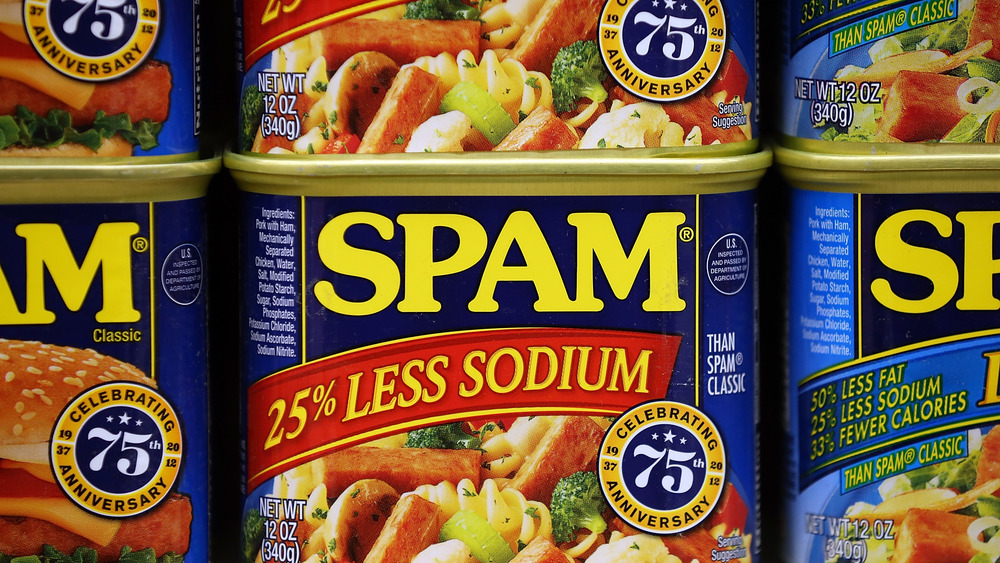The Difference Between SPAM And Bologna
The world of processed meats is a big one. You have the meat that comes in packs (sausages, hot dogs, etc.), the meat that comes from the deli counter (salami, bologna, and the likes) and lastly, the meat that comes in a can (looking at you, SPAM!). While they all might belong to the same family, each of the popular processed meats are unique in their own ways. Some are obvious: You know the difference between a hot dog and a piece of beef jerky, for instance. But others are a little more subtle, like what sets bologna apart from SPAM.
At first glance, both SPAM and bologna appear to be mashed-up mystery meats that are an unsettling (and unnatural) pink color. But look closer and you'll realize they really aren't the same at all. If you've been curious how the two processed meats are different, here's your answer. Hint: It's found on the nutritional label.
SPAM has significantly fewer ingredients
Of the two processed meats, SPAM is actually the less mysterious. While there are a lot of urban myths about what's really in the pink square slab of meat, the contents of a can of SPAM are surprisingly simple. In fact, there are only six ingredients: cooked pork (which includes both the shoulder and ham), salt, water, potato starch, sugar, and sodium nitrite.
Bologna, on the other hand, is a little more mystifying. That's because the U.S. Department of Agriculture (USDA) requires that all processed meats be reduced to tiny particles so you can't see exactly what's inside that slice of bologna from the grocery store. It likely contains pork (and maybe beef) along with a variety of different spices but it may also contain what bologna companies label simply "trimmings." HuffPost warns that these "trimmings" are often kept hidden because they're from parts of the animal that "make people want to faint." Yuck.

